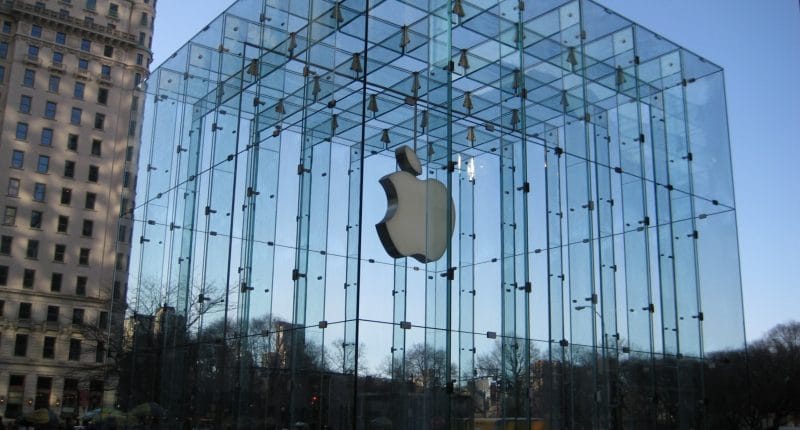As companies around the world take up the vow to become carbon neutral in the near future, the need for sustainable energy sources has soared. Apple Inc., which has also been a part of this green movement in silicon valley, announced that it has undertaken the construction of a massive energy storage project with a capacity of 240 MWh, at its solar farm housed in North California.
In a press release, the company confirmed that it will be building one of the US’s largest battery projects, which will be a grid-scale energy storage construction capable of meeting the energy demands of 7,000 houses for one day. This was further confirmed by Apple’s Vice President of Environment Policy and Social Initiatives, Lisa Jackson, during an interview. Jackson said that renewable forms of energy are ‘intermittent’, and added, “If we can do it, and we can show that it works for us, it takes away the concerns about intermittency and it helps the grid in terms of stabilization. It’s something that can be imitated or built upon by other companies.”
The main aim will be to support the firm’s 130-megawatt solar farm in California, titled ‘California Flats’, which is located some 100 miles southeast of the company’s headquarters in Cupertino (and whose purpose is to supply energy to all of Apple’s undertakings in the state), by storing the excess energy generated by the same, for future use. If successful, Apple will become the owner of one of the largest battery projects in the world with a massive new 240 MWh energy storage project, leaving behind the 193.5 MWh Big Battery set up created by competitor Tesla in Southern Australia.
Nevertheless, upon subsequent scrutiny of the documents submitted by the company to the Monterey County Board of Supervisors, The Verge found that even Tesla has something to benefit from in this project. The modification and construction of the battery will be making use of up to a maximum of 85 units of the Tesla Megapack battery (which, by the way, happens to be a massive lithium-ion battery storage product, which can store up to 3 MWh of energy), with each being installed on concrete pads, 75 ft. by 12 ft. by 2 ft in size. Purchasing these batteries from Tesla can cost Apple up to $50 Million.
This comes after Apple was in the news some time back for reportedly ‘poaching’ a number of executives and engineers, primarily for its self-driving electric vehicle project. Nonetheless, big corporations usually find a way to put their differences aside if there’s scope for monetary gains, so we are not surprised.
The process will also entail addition of more safety features, facility upgrades to the existing northern substation for better storage of energy, setting up of transmission lines, improvements in terms of drainage, real time monitors and control systems, site fencings, and also a new driveway from Turkey Flats Road, which has been proposed. This will allow the construction to store the excess energy during periods of low demand, and subsequently release it during periods of peak demand.
Jackson has also said that Apple may be looking at sharing its findings from the project with other companies, but added that it is too early as yet to definitely describe the course of action. This might prove to be interesting and informative, as the firm had previously shared the data generated from an Apple Recycling Technology Lab in Texas, as well as a joint venture for aluminum smelting in Canada.
This project will serve as the next step in Apple’s endeavor to strive for cleaner energy in all its facilities. On Wednesday, it also said that 110 of its suppliers have made the shift to clean energy for work related to the firm. As such, around 8 Gigawatts of clean energy was produced, which, according to Apple, equals to “removing 3.4 million cars from the roads.”
The Tech Portal is published by Blue Box Media Private Limited. Our investors have no influence over our reporting. Read our full Ownership and Funding Disclosure →






